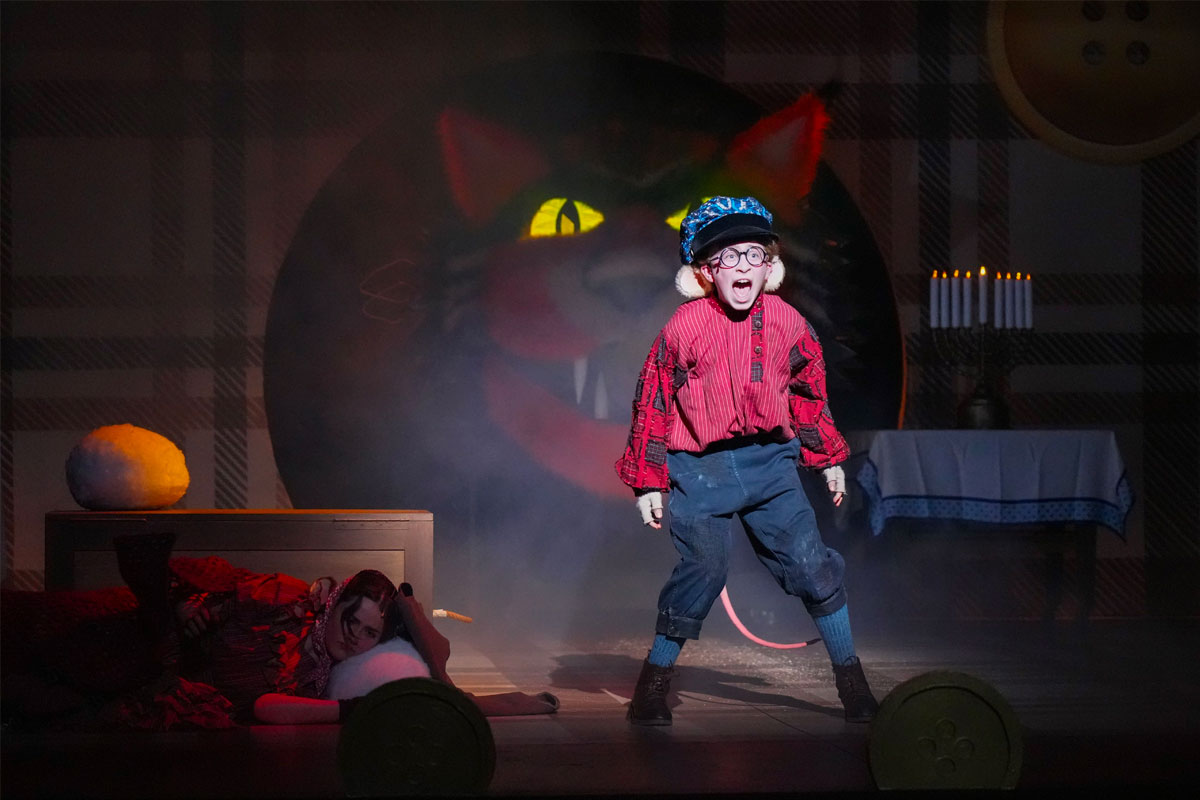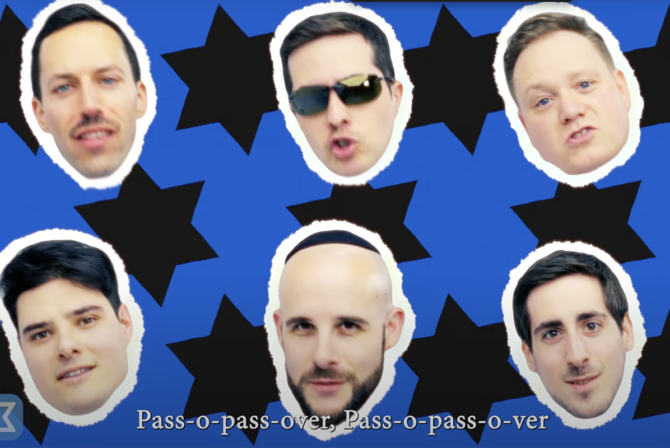It’s intermission at the stage adaptation of “An American Tail” and my daughter is terrified of the cats.
Things had started out OK: Just like in the 1986 animated film on which the play is based, the show opens with the Mouskewitz family (a family of Jewish mice) celebrating Hanukkah in their village in Russia at the turn of the 20th century.
Then come the cats.
As in the film, an army of cats interrupts the Hanukkah festivities, attacks the mice and displaces the entire mouse village. Hats off to the set designers, because these cats are nearly as scary as the pogrom they are intended to represent. They seem to take up the entire stage, with sharp teeth, glowing eyes and accompanying sound effects that are maybe, like, 15% too loud? I don’t know, I’m not an expert, I just know that my 8-year-old is freaking out.
The cats quickly retreat, but my daughter can’t relax. She hides behind her hands for the next hour, worrying the cats might reappear without warning.
There’s a metaphor here, one you probably don’t have to dig too deep to uncover.
“An American Tail” follows the Mouskewitz family as they flee Russia by boat for a better life in the United States. “There are no cats in America,” they sing, “and the streets are paved with cheese.” During a storm, the youngest member of the Mouskewitz family, Fievel, falls overboard and arrives in the U.S. alone. As it turns out, there actually are cats in America, but with the help of other immigrants he meets along the way, Fievel finds his family and defeats the cats.
The stage adaptation opened this April at the Children’s Theater Company in Minneapolis, Minnesota after the theater tapped Tony-Award winning playwright Itamar Moses to adapt the story for stage.
As we exit the theater for intermission, I scan the crowd for an usher who can put my daughter’s mind at ease and tell us if and when the scary cats will return. But first we join the hundreds of families eating their pre-packed snacks on the floor.
“What do you guys think so far?” a dad next to us asks as we open a bag of Pirate’s Booty.
“It’s good,” I tell him. “But my daughter is terrified of the cats.”
He nods sympathetically. “They’re definitely going to have to adjust some things before they tour this,” he says. “Like the first five minutes. All that holiday and religious exposition? That can go. You can figure that part out in context later.”
The first five minutes? I think. That was the good part. Those were the moments the Mousekewitz family is all together and happy, celebrating Hanukkah in their shtetl. The first lines are literally “Baruch atah adonai” as they light the Hanukkah candles. Those were the moments before my daughter was lowkey traumatized, when she was still excitedly whisper-screaming, “I can’t wait to tell my friends this is about Jewish mice.”
This guy thinks they should get rid of all the Jewish stuff.

The Company of the World Premiere of An American Tail the Musical at Children’s Theatre Company. Photo: Glen Stubbe Photography.
The Jewish story at the beginning does act as a springboard for the rest of the story, which encompasses immigrant stories from all over the world. After arriving in America, Fievel meets mice from Ireland, from Italy, from China, from the American South, all of whom are searching for a better life, all of whom are running from their own cats.
But the first five minutes of Jewish exposition — that wasn’t included by accident.
Playwright Itamar Moses has said as much in press for the show. He told Twin Cities Jewish outlet TC Jewfolk that he feels confident that seeing the Jewish immigrant story centered in the 1986 film affected him subconsciously. And in an interview with Minnesota Public Radio, Moses said he shied away from making explicitly Jewish art until recently.
“I’ve been made aware of my Jewishness in sort of a negative way in this country,” the California native told MPR. “In the last five years, and then even more so in the last year or two, I’ve suddenly felt it in a new way. And so that’s made me, I think, want to double down on that a little bit more.”
“To include things like Jewish prayers…getting to do that stuff on stage, and put some of that stuff sort of explicitly out there, has felt like a subtle form of defiance,” Moses added.
Back in the theater lobby, I think about all the times a character has celebrated Christmas in a movie or TV show. I wonder if anyone has ever thought that that “exposition” should be cut. I think about Dara Horn’s book “People Love Dead Jews” and how people want to hear stories of our trauma, not watch us thrive. And then my daughter tugs on my arm and reminds me that we need to find an usher, need to find out if the cats will be back. There’s something comforting in knowing this is a cat I can protect her from. I pack up our snacks and say goodbye to the man sitting next to us.
I wonder if he, in a way, is a cat.
An usher gives my daughter noise-canceling headphones and she is able to enjoy the second act. The play does exactly what you want a play about immigrants for children to do: It drives home the importance of making space for people who are different from yourself.
The next week, we watch the animated movie from 1986. As Siskel and Ebert noted at the time, the movie never once says the word Jewish — in fact, they gave it two thumbs down for “chickening out” of an explicitly Jewish story. My daughter has no idea who Siskel and Ebert are but she essentially says the same thing. She liked the play better, despite the scary cats, and I know it’s because of the Hebrew and Yiddish words incorporated into the script and set design, shapes and sounds and tunes she’s only just becoming familiar with. I know it has to do with being surrounded by hundreds of kids watching characters onstage proudly say the Shema and recite the Hanukkah blessings — something she does, and that she is all too aware makes her different.
What the man sitting next to me at intermission will probably never understand is that for some of us, the “holiday and religious exposition” is kind of the point.








